With 42 sensory stations, visitors from all over the world can explore through touch the breathtaking architecture of the three iconic pavilions, as well as their futuristic exhibitions.
Here’s a look back at our contribution to this world event, showcasing great innovations.
When grand and complex architecture meets inclusive design
Named Opportunity, Mobility and Sustainability, these pavilions enable visitors to see and reflect on the central theme of Expo 2020 Dubai: “Connecting minds, creating the future”. Located outside each pavilion, the sensory stations give every visitor the chance to experience the architecture of the building and its environment.
Touching the architecture of the Mobility Pavilion
Designed by the prestigious British architectural firm Foster + Partners, the Mobility Pavilion offers a journey through technical progress thanks to four playful and accessible focal points.
1. Sensory experience is contextualized. Through texts in English, Arabic and Braille, visitors can more easily find their way around the exhibition.
2. One device enables visitors to discover the building’s surroundings, its urban setting, its access points and the main traffic routes.
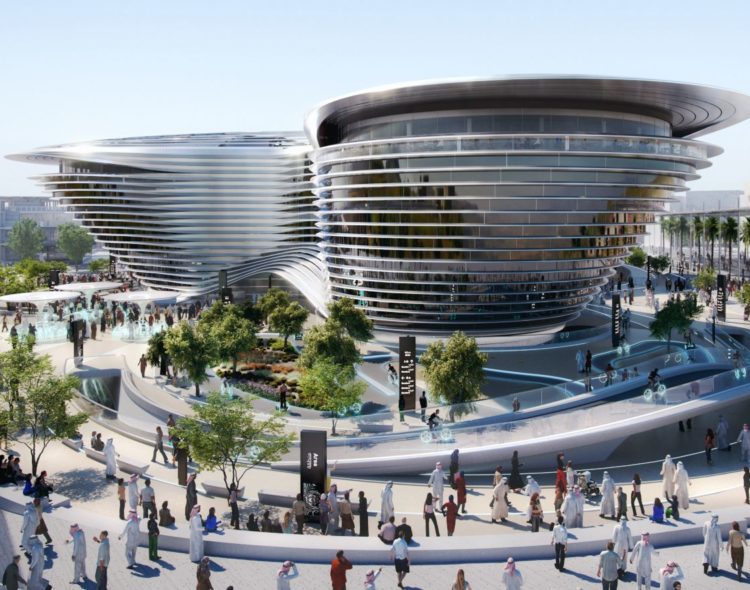
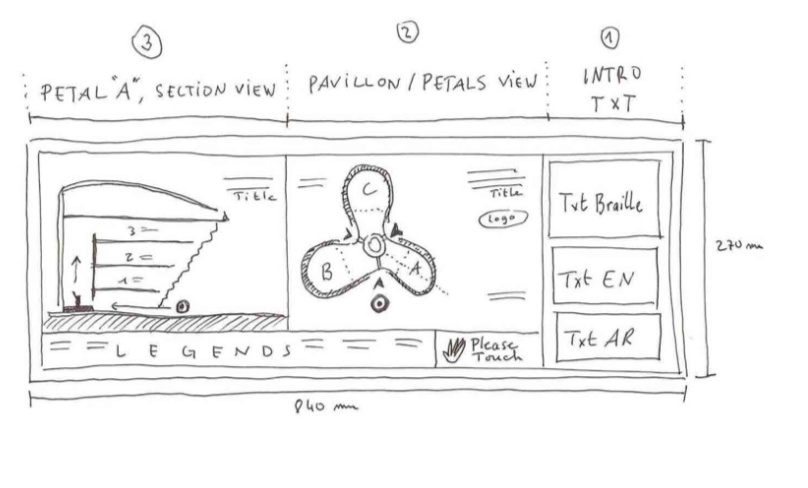
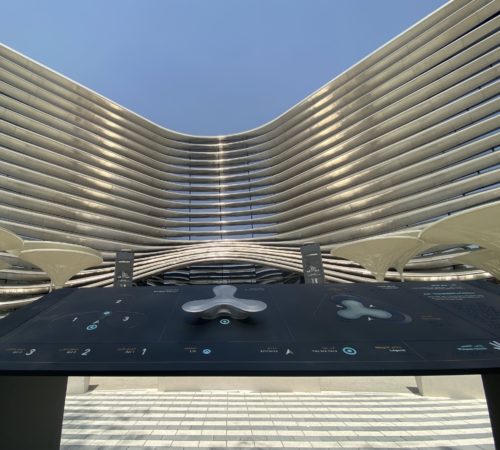
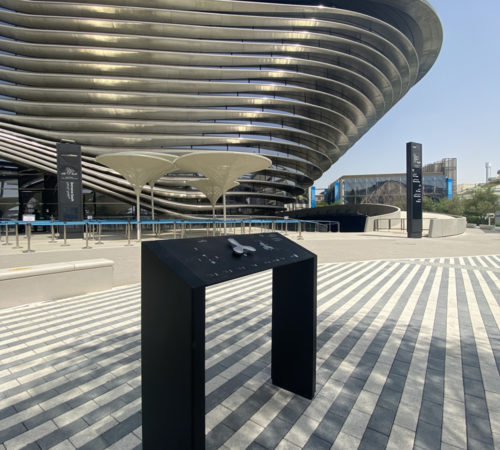
3. Another helps to reveal the structure of the building, with its ribbed and curved shape giving the impression of movement. Tactile Studio has made the unusual architecture of this pavilion accessible to all.
4. The last focal point highlights the exhibition spaces of the Mobility Pavilion as well as its visitor itinerary. It offers a journey in three stages through this tri-lobed building. To start their exploration, visitors must get to the top floor by taking the tallest elevator in the world. To explain this unique experience clearly, Tactile Studio has integrated a sensory signage system.
Experience the Sustainability Pavilion, green centrepiece of Dubai 2020
A Net Zero building (CO2 emission-neutral), the Sustainability Pavilion aims to raise awareness of climate change and offer concrete solutions for the future.
Designed by the renowned international agency Grimshaw Architects, the building takes the form of a steel canopy comprising more than 1,000 solar panels. It is encircled by a grove of 18 energy-absorbing trees which capture solar energy and redirect it into the canopy. Tactile Studio has designed and made two inclusive stations dedicated to the architecture of this unique space.
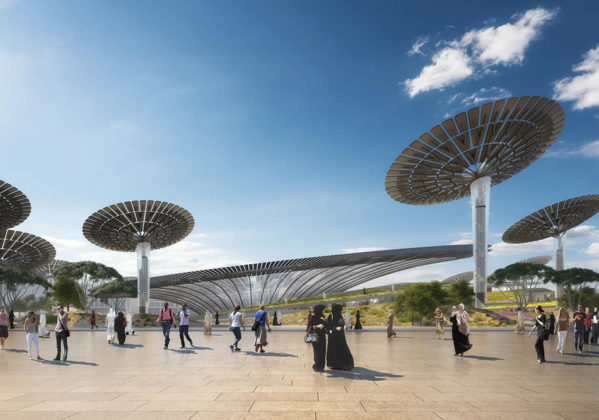
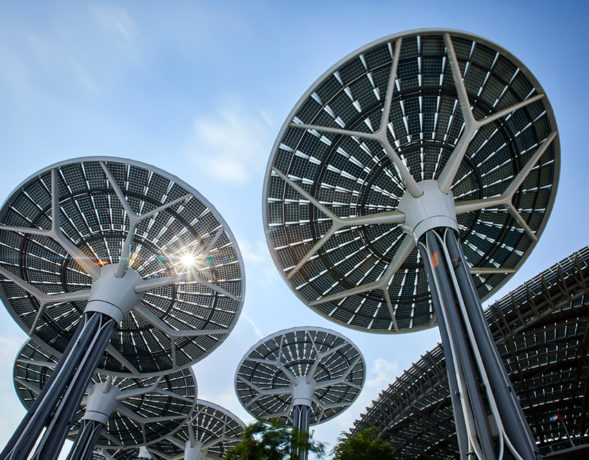
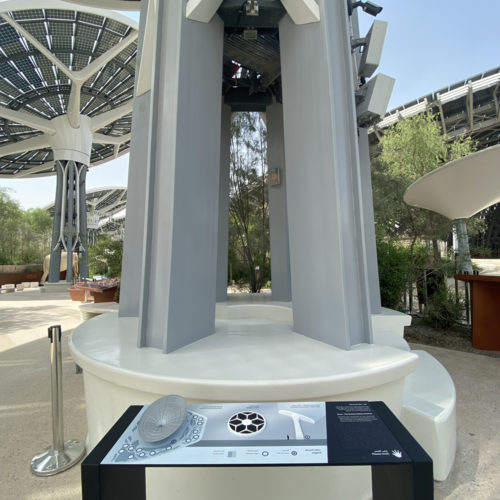
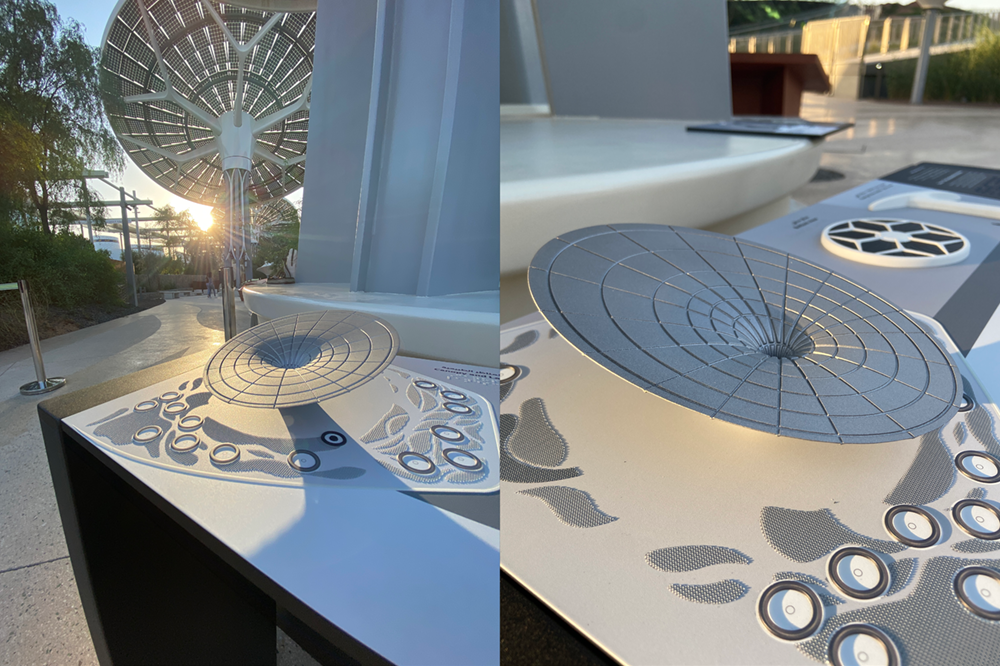
A first sensory device presents the architectural environment of the pavilion to all, in four parts:
1. The first part of the station introduces in Arabic, English and Braille the particular features of this pavilion and its environment – composed of solar trees.
2. The second part gives a view of the side of a solar tree and an impression of its scale.
3. The third part of the station reveals to explorers the aesthetics of a solar tree, as seen from below.
4. The last presents a simplified model of the pavilion and its surrounding landscape.
Another station highlights the architectural structure of the central building. It offers 3-D and cross-sectional views of the building as well as a tactile discovery of the exhibition spaces.
–
A device presents the impressive architecture of the Opportunity Pavilion, designed by the international studio AGi architects.
–
The aesthetics of all the inclusive stations are designed to be in unison with the architecture of each pavilion.
Futuristic exhibitions at your fingertips
Each pavilion offers an avant-garde exhibition tour, in keeping with its theme. Marked with numerous sensory devices, these trails offer everyone access to the installations.
The exhibition spaces of the Mobility Pavilion immerse the visitor in the mobility of yesterday, today and tomorrow.
From earth to outer space, the galleries discuss the positive influence of encounters, of diversity, of sharing knowledge and ideas. More than 21 devices are dotted along this incredible journey.
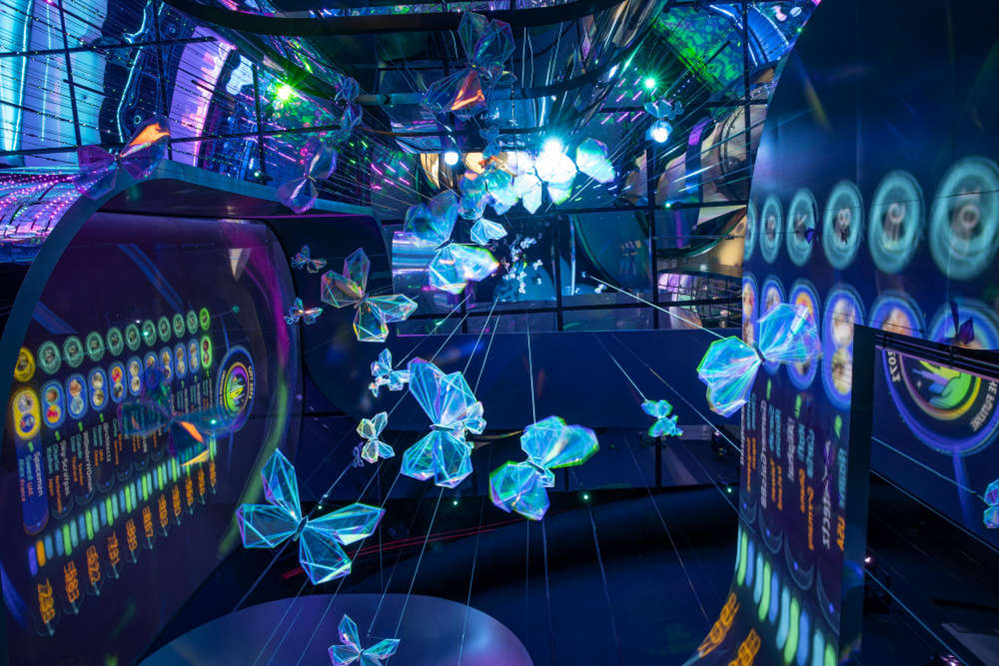
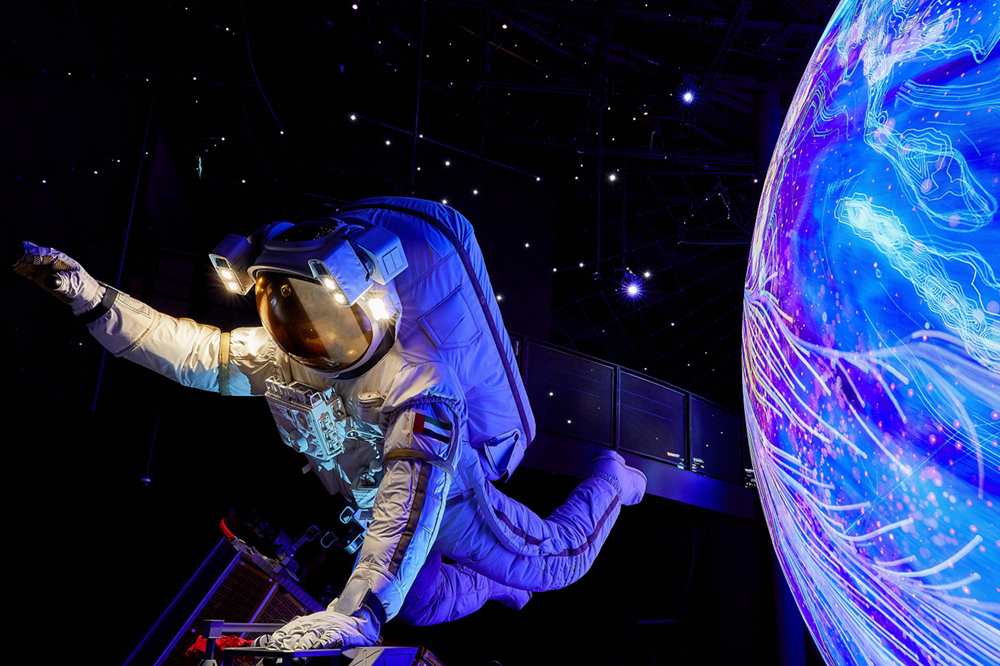
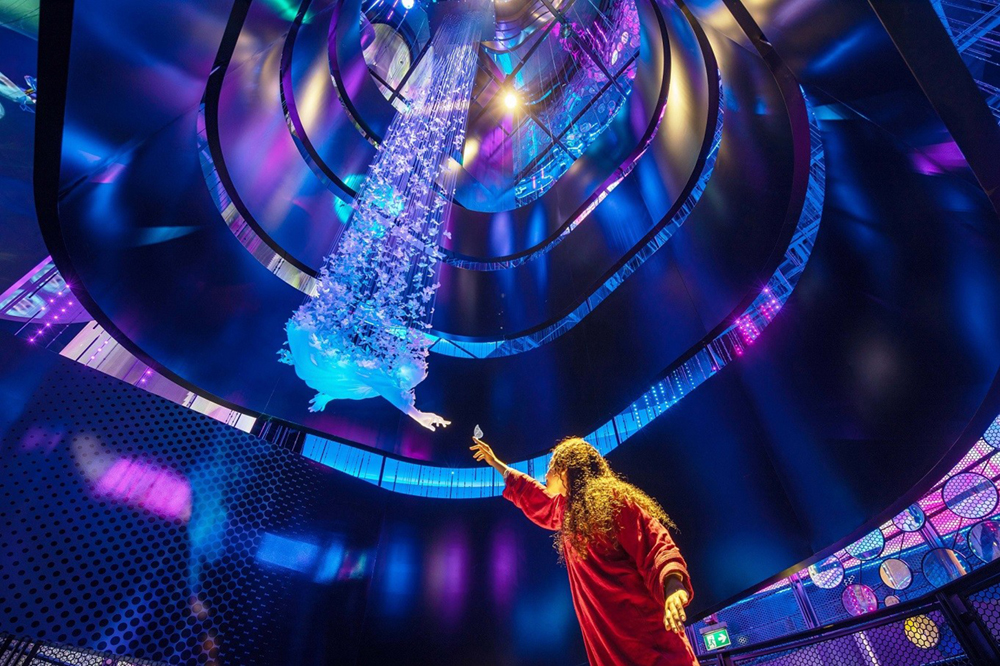
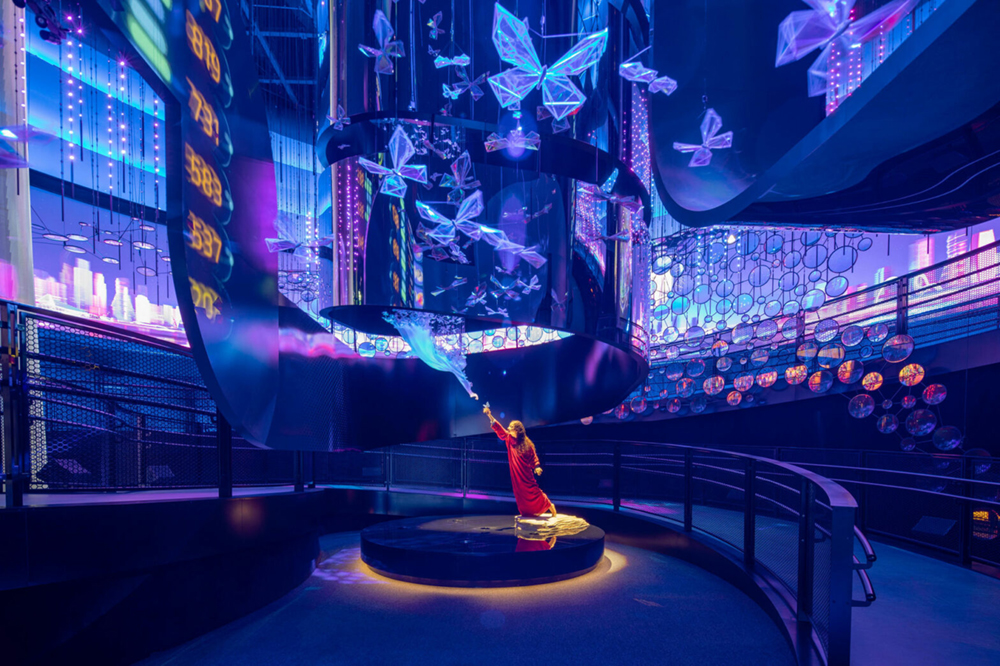
One of the most fascinating exhibits is called Shamsa and Bedouin Girl – an allegory of travel, of movement and of discovery. It presents two imaginary people: a little girl Bedouin Girl who makes a connexion with Shamsa, a kind spirit from outer space made up of a hundred butterflies.
A sensory station placed opposite the installation transports every visitor into this parallel universe.
Tactile Studio took up a challenge in the design and manufacture of this device: to focus attention on one of the two levitating figures. The agency’s designers and makers came up with a visual illusion to allow the two subjects to be perfectly independent of each other and therefore not touch. Shamsa is positioned on the ground while the Bedouin Girl is held levitating by a metal hook located at the back of the device. In the midst of a hushed atmosphere, the nearly invisible black structures create an almost-perfect illusion.
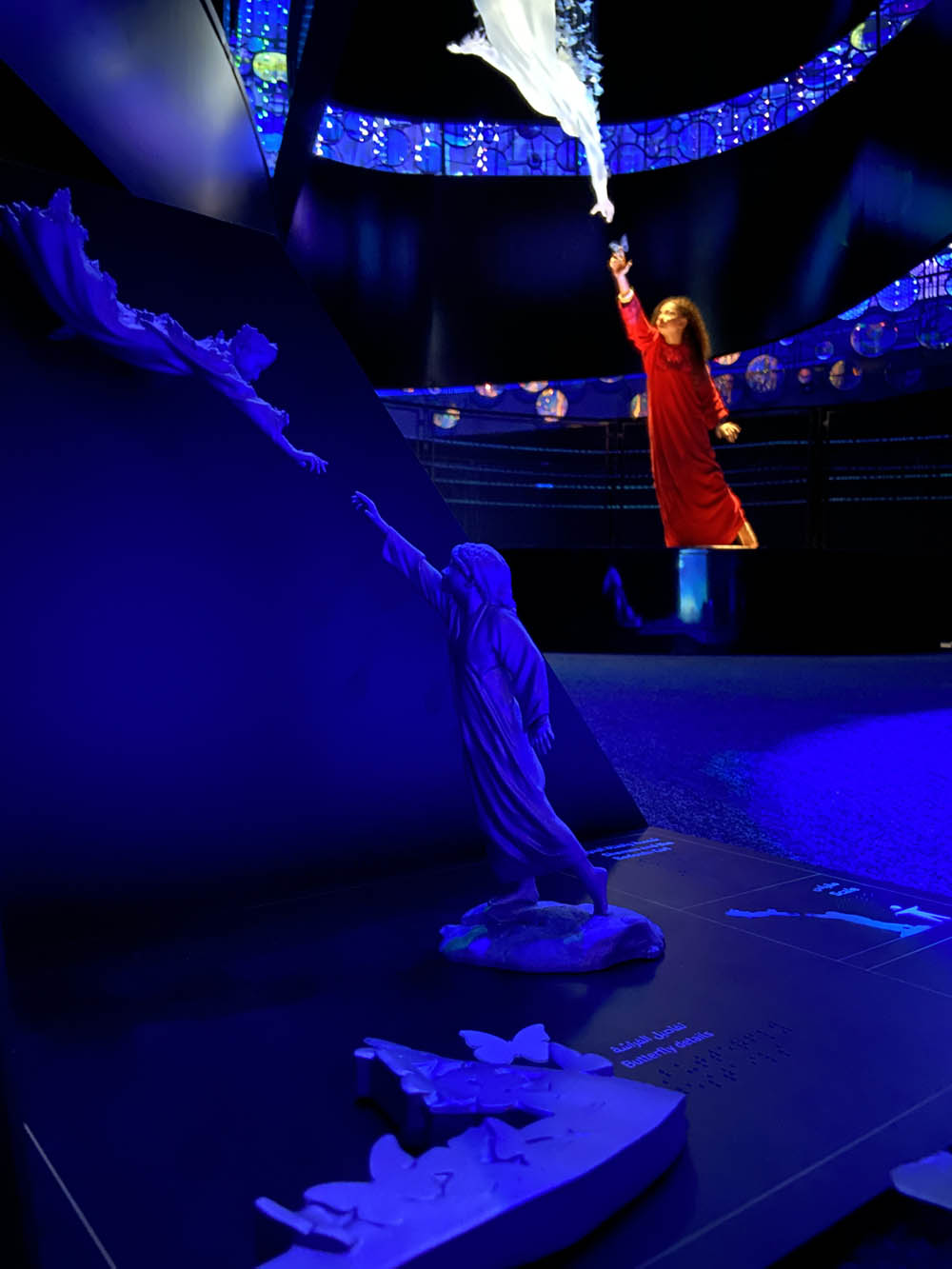
The Sustainability Pavilion’s 6,000 square meters of exhibition space offer “real solutions to real-world problems”, thanks to a multi-sensory trail.
At the start of the visit, explorers have the choice of two itineraries: “Forest” or “Ocean”. Nature is the theme of this pavilion, and the two circuits create a narrative journey through the wonder, crisis and regeneration of nature. The two trails come together at the “Laboratory of Future Values” which presents sustainable responses to issues raised.
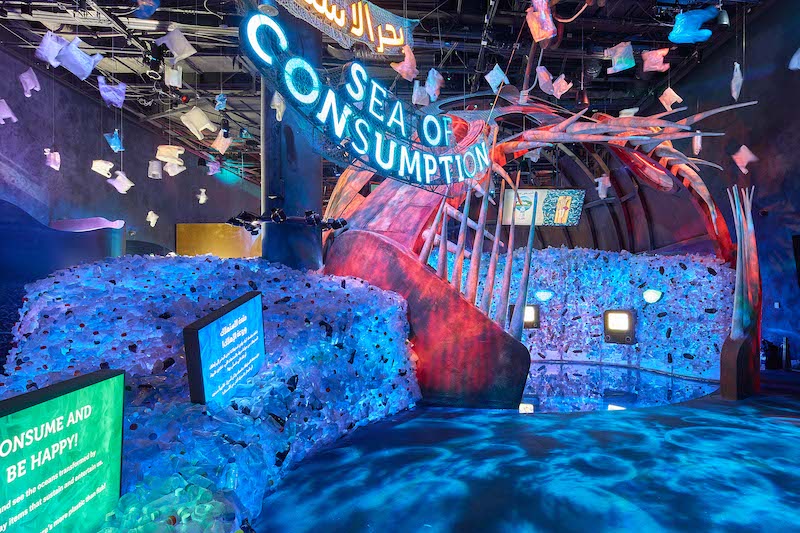
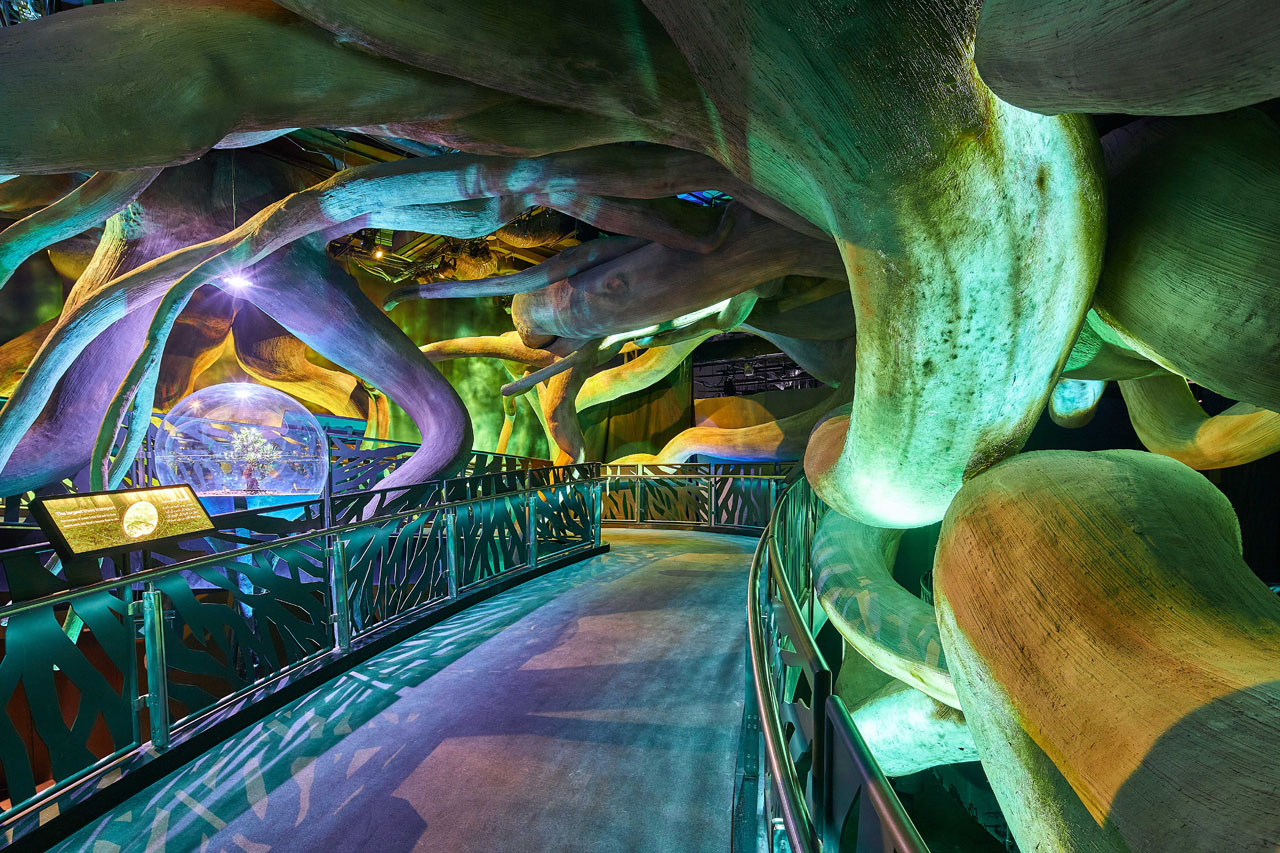
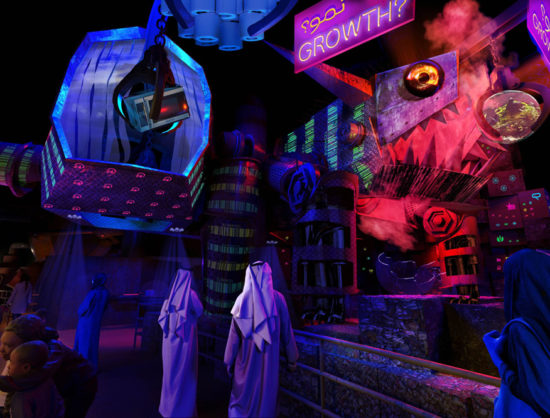
THE GNASHER – a monumental exhibit in constant motion – raises awareness of the impact of industry on nature. Twelve microcosms suspended around the installation enter the mouth of this mechanical monster, called The Gnasher. At the end of the cycle, these microcosms are transformed into consumer products.
Tactile Studio made this monumental exhibit accessible to everyone through an inclusive device divided into three sections:
1. An introductory label in English, Arabic and Braille transcription.
2. The face of “the monster” in the form of a tactile bas-relief.
3. The third section explains through tactile pictograms and visuals how the microcosms absorbed by the mechanical animal are transformed into consumer products.

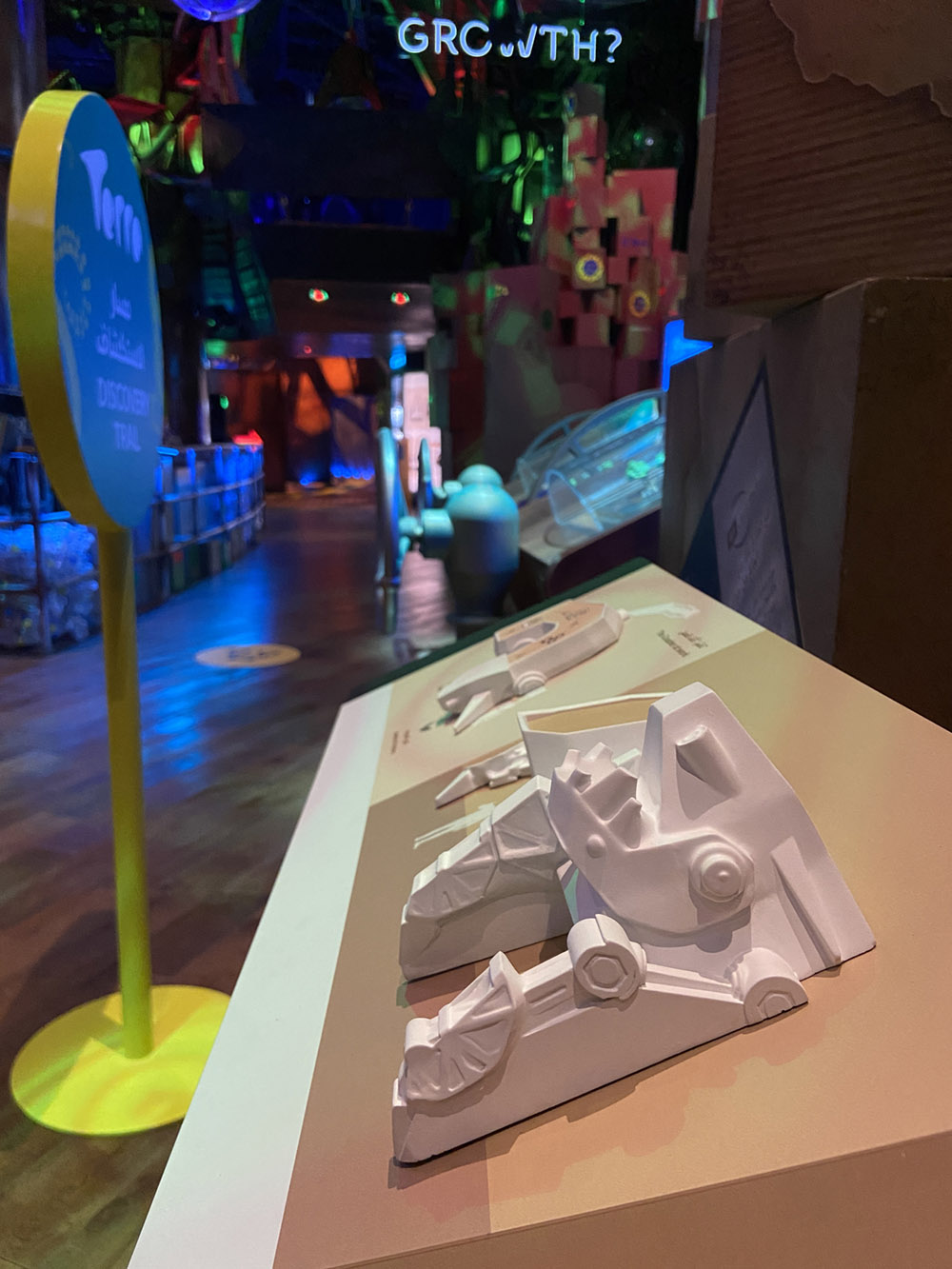
As with the Louvre Abu Dhabi, the future National Museum of Oman and again with the University of Riyadh, the stations follow the reading direction in the Arab world: from right to left.
–
The inclusive devices are intended to be long-lasting, as the three iconic pavilions are set to become museums at the end of Expo 2020 Dubai.
–
A huge thank-you to all the Expo 2020 teams – Foster + Partners, MET Studio Design, Grimshaw, Thinkwell Group, AGiarchitects and, of course, the Emaar project team: Joy Proudian, Martin Jakobson, Mohammed Al Qassim and Paola Tardini, Anoosha AlMarzouqi of Expo 2020 – for this one-of-a-kind collaboration.
Client: Expo 2020 Dubai

Production: Atelier WAM
